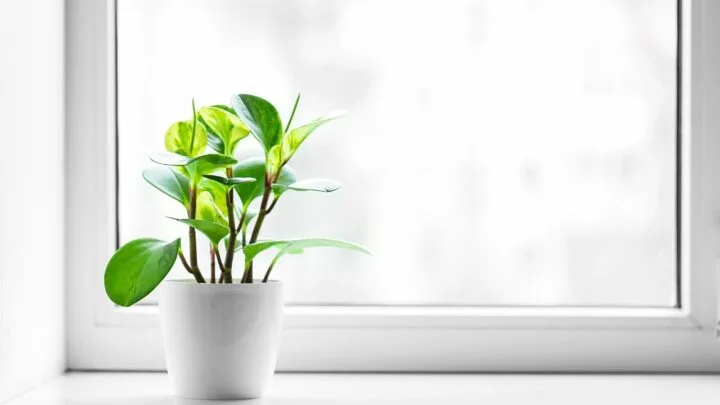Many houseplants are native to tropical environments, where tall trees continually filter sunlight.
Some plants, particularly those native to Australia and South Africa, require a lot of sunlight to survive.
A lot of light or high light according to the University of Michigan is light between 250-450 umol or more than 1,000 foot-candles. Plants get bright direct light in a south-facing window or south-west facing window at home.
With a lovely pot and any of those sun-loving houseplants, you can enhance any bright space.
Following are the 20 best houseplants that you can grow indoors in the high light area.
20 Best Plants for High Light
- Jade Plant (Crassula argentea)
- Gardenia (Gardenia jasminoides)
- African Milk Bush (Euphorbia trigona)
- Croton (Codiaeum variegatum)
- Bird of Paradise (Strelitzia)
- Aloe Vera (Aloe barbadensis)
- Echeveria
- Areca Palm (Dypsis lutescens)
- Fiddle-Leaf Fig (Ficus lyrate)
- String of Pearls (Senecio rowleyanus)
- Sago Palm (Cycas revoluta)
- Geranium (Pelargonium)
- Yucca Plant (Yucca gigantea)
- Papyrus (Cyperus papyrus)
- Ponytail Palm (Beaucarnea recurvata)
- Jasmine
- Money Tree (Pachira Aquatica)
- Snake Plant (Sansevieria trifasciata)
- Hibiscus (Hibiscus rosa-Sinensis)
- Dragon Tree (Dracaena Draco)
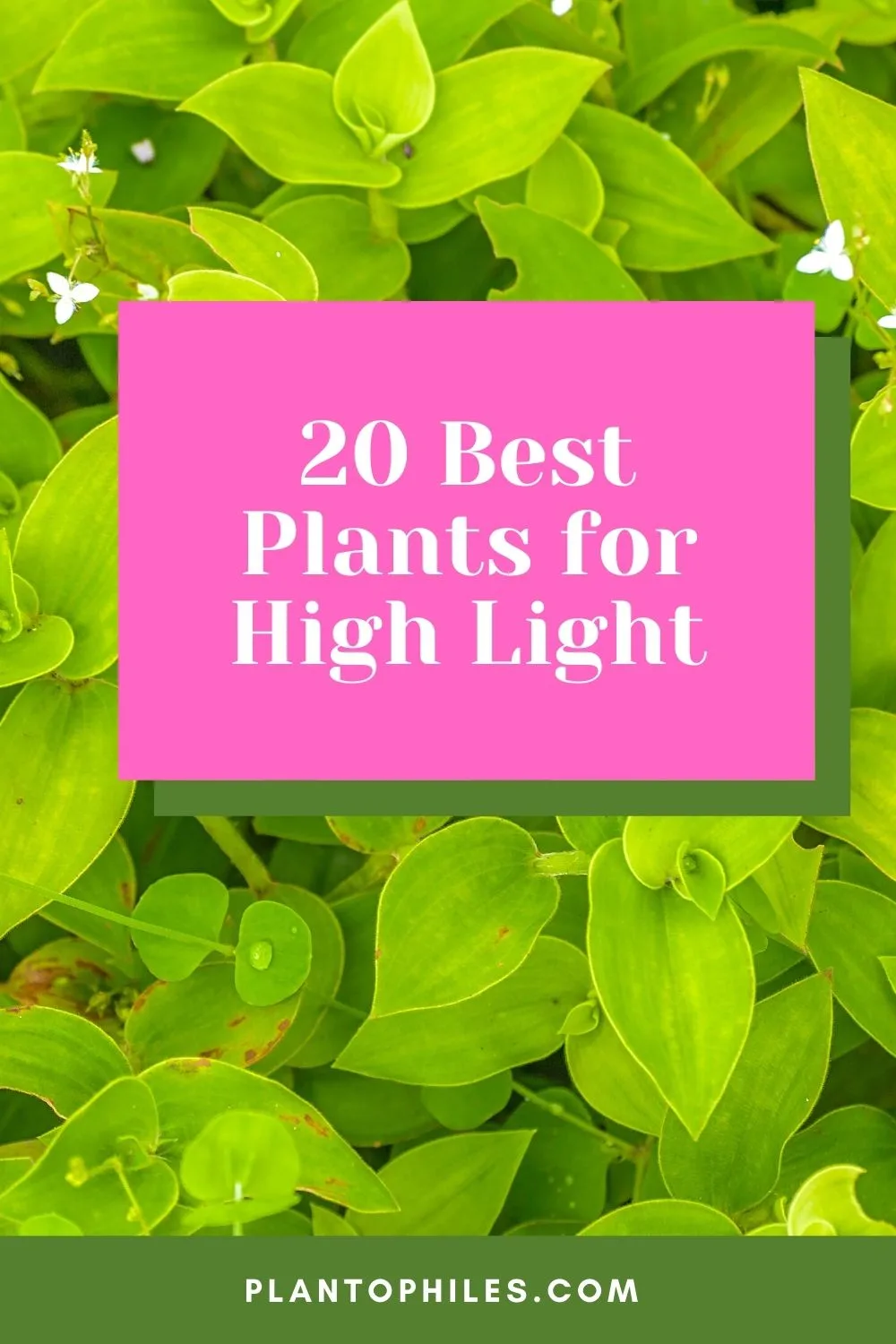
20 Best Plants for High Light
Table of Contents
20 Best High Light Plants
1. Jade Plant (Crassula argentea)
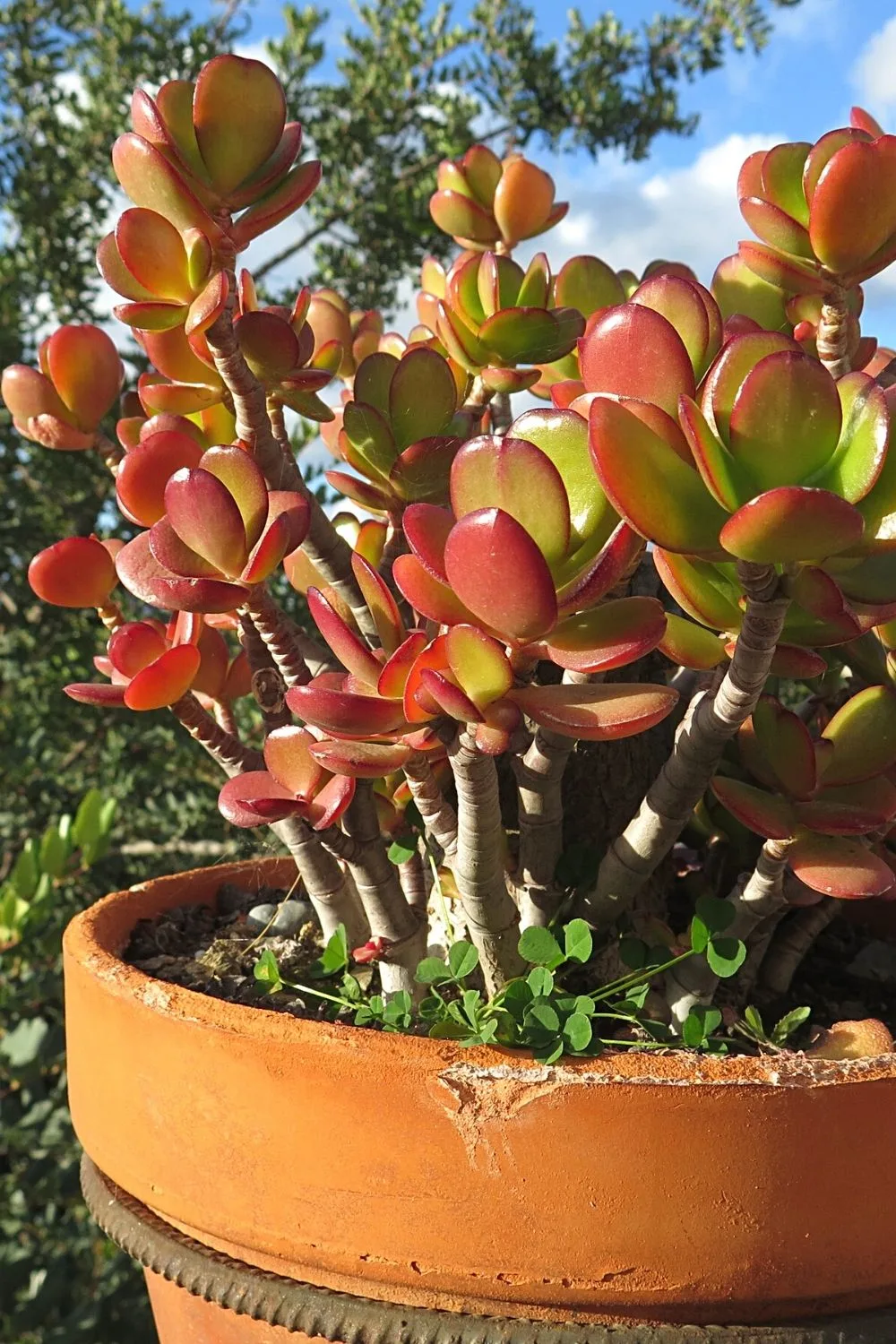
Jade Plant (Crassula argentea) enjoys being in direct sunlight
- Water: Regular watering with good drainage
- Light: Enjoys direct sun
- Soil pH: 6.0 to 6.5
Jade plants have remained attractive houseplants for individuals with bright window ledges or bright conservatory thanks to their robust stems and fascinating, succulent foliage.
A south-facing window is great for jade plants because they require at least 4 hours of sun per day.
The Crassula argentea is not really a cactus, despite being fleshy and so drought tolerant.
To avoid losing foliage, maintain your jade plant hydrated by misting it when the topsoil is dried.
Put your jade plant in a sufficiently sturdy container to avoid it from tumbling over.
Jade plants may live for years and keep growing gently over time.
2. Gardenia (Gardenia jasminoides)
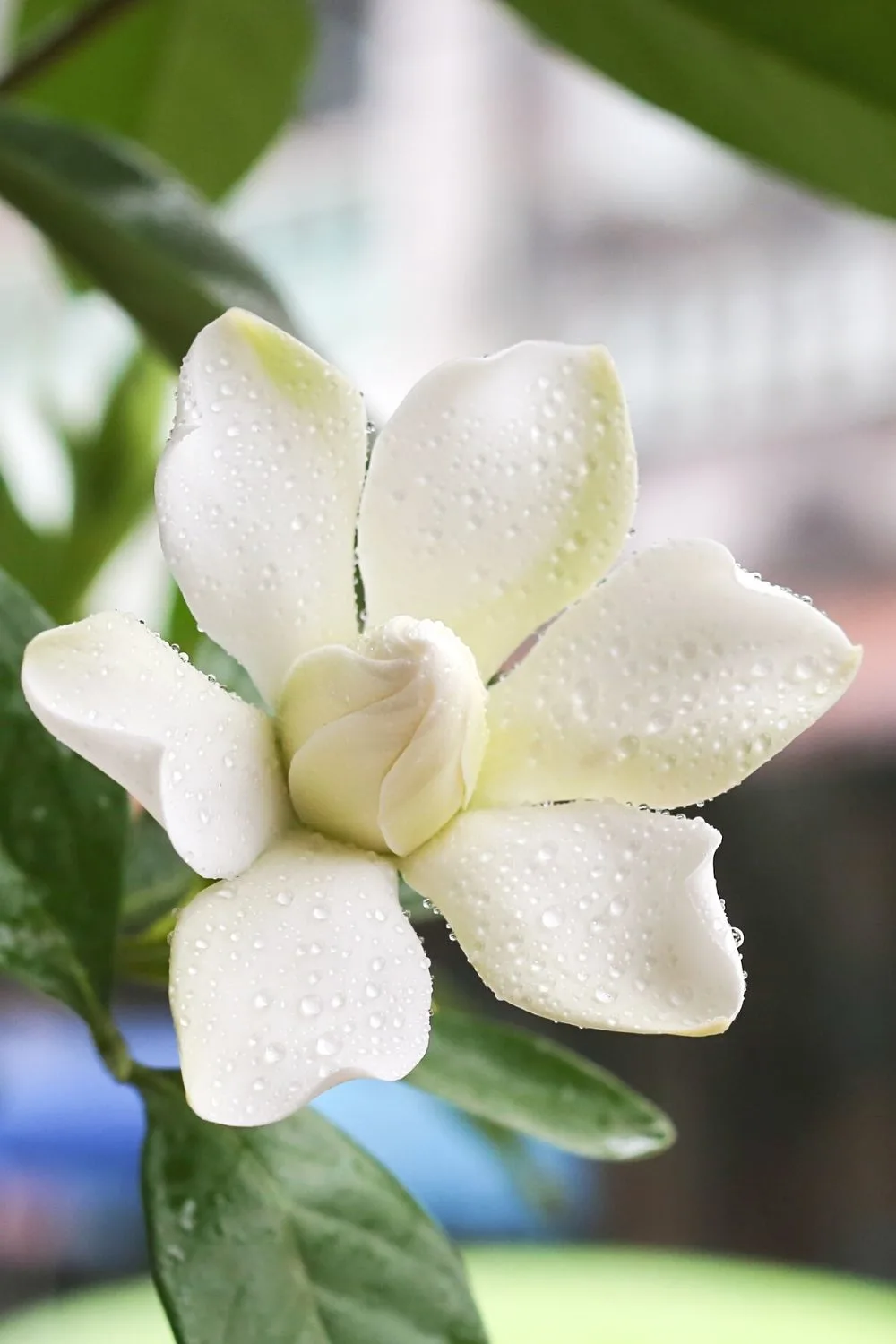
For Gardenia (Gardenia jasminoides) to grow optimally, you should place it in an area with direct sunlight
- Soil type: Standard potting soil will be best
- Light: Direct sunlight is optimum
- Soil pH: 5.0 to 6.5
This perennial favorite of outdoor florists is also an excellent choice for adding foliage and blossoming florals to your home.
Gardenias, which are native to tropical regions, can fill your room with lovely floral scents throughout the spring and early summer.
Because this species demands a lot of sunshine to survive, it will flourish optimally in windows with a west or south orientation.
Gardenias require regular watering throughout the planting season but do not allow water to gather at the bottom of the plant’s container.
To keep alive in the wintertime, this plant only needs moderate watering and a warm light location in your house.
3. African Milk Bush (Euphorbia trigona)
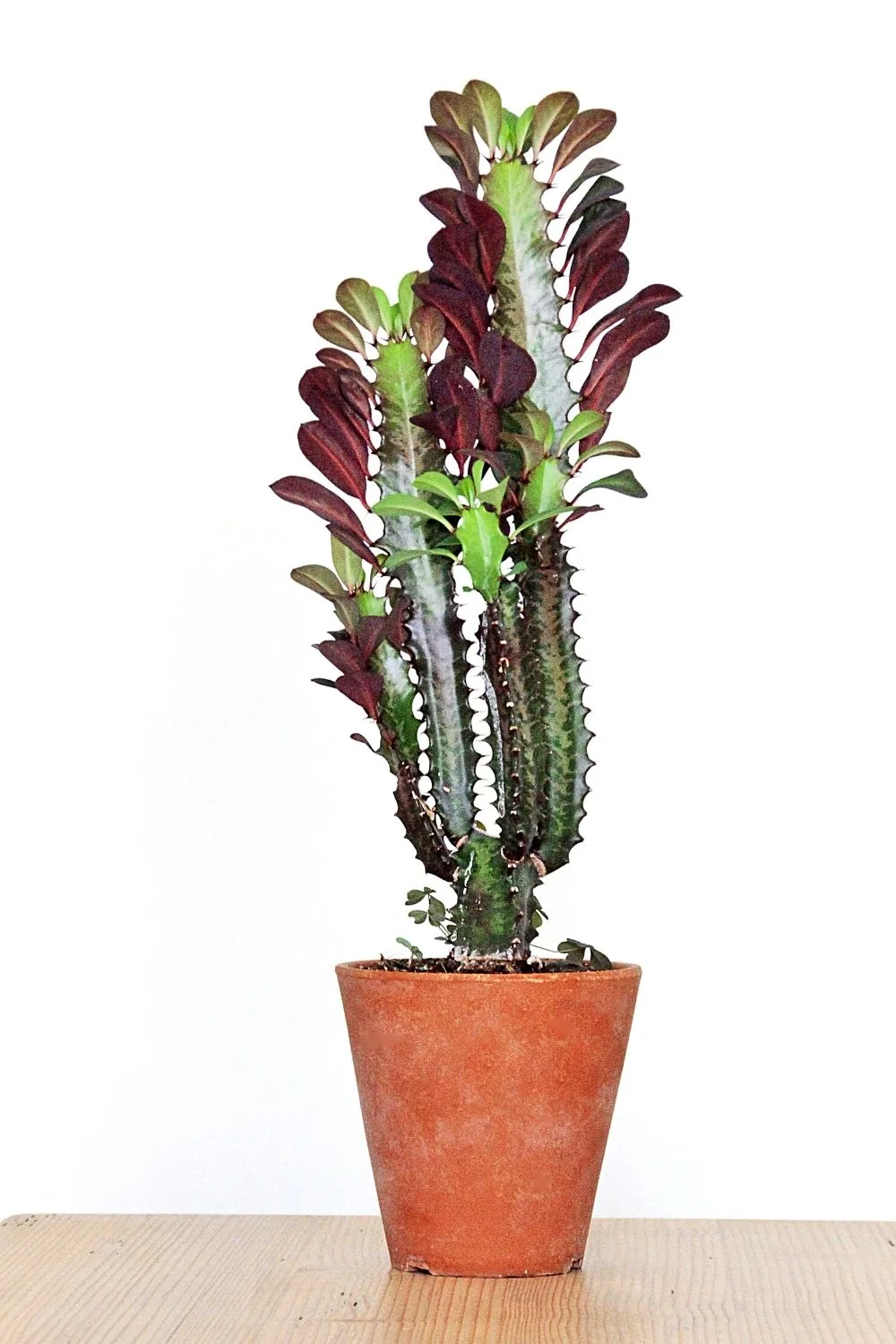
African Milk Bush (Euphorbia trigona) is a tropical plant that thrives in bright, indirect light
- Water: Let the plant dry between waterings; it cannot withstand prolonged drought.
- Light: Can withstand high but indirect light
- Soil pH: 6.1 to 7.8
Euphorbia trigona is a strange-looking shrub that provokes intense emotions of love or hate.
Despite not being a cactus, this succulent has spiky thorns that could make repotting difficult.
The African milk bush is exclusively a tropical plant, so if you leave it outside for the summer, make sure you take it back in when the temperature drops under 50 degrees Fahrenheit.
4. Croton (Codiaeum variegatum)
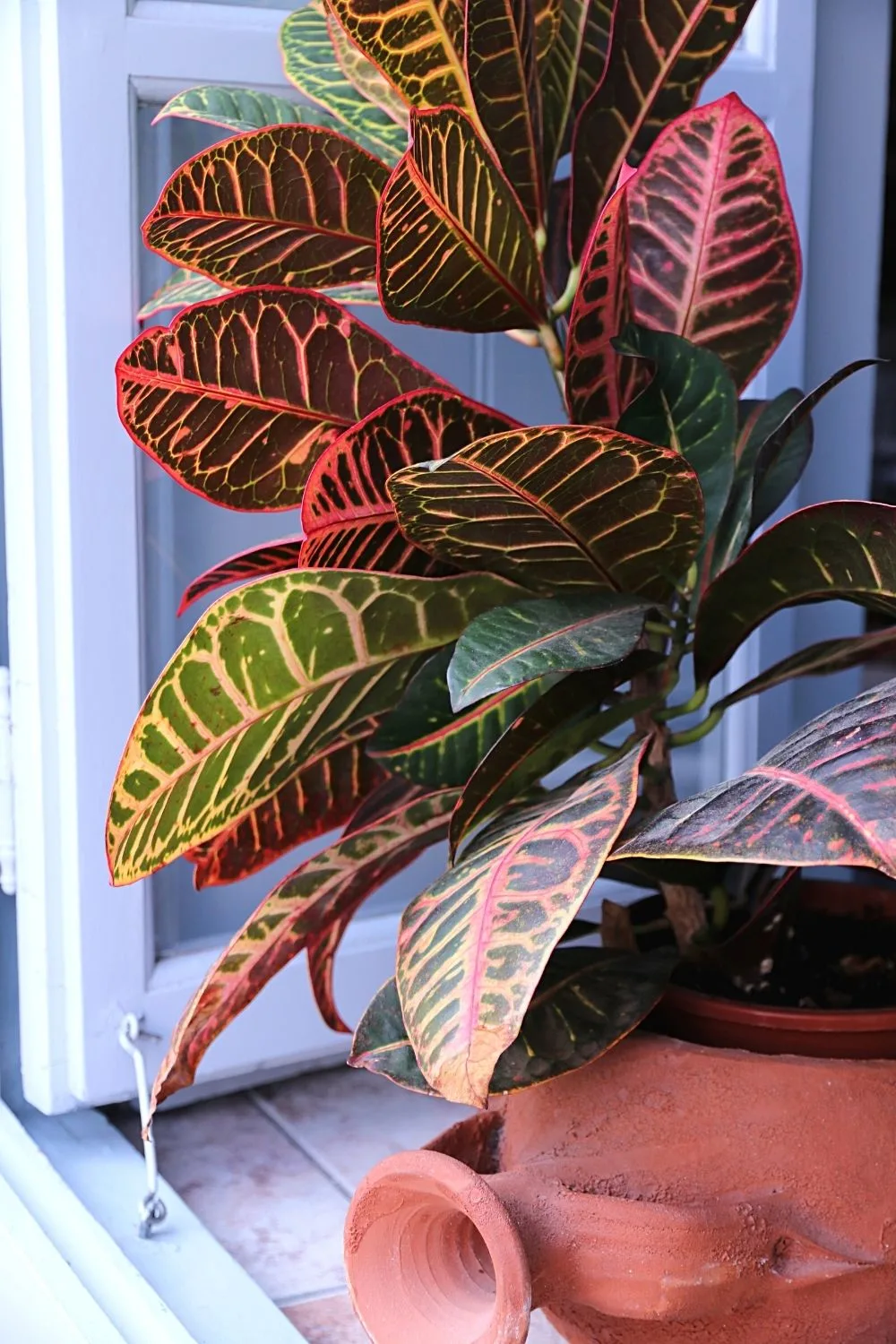
Croton (Codiaeum variegatum) is one of the various plants that thrive in high light
- Water: Likes to stay moist and requires high humidity
- Light: The plant enjoys full sun
- Soil pH: 4.5 to 6.5
The croton proves that leaves may be just as beautiful and vivid as blooms.
Hydrate your croton plants once the topsoil gets dry; don’t overwater them.
Croton plants require warm conditions to flourish, and if temperatures drop under 50 degrees Fahrenheit, they may perish.
5. Bird of Paradise (Strelitzia)
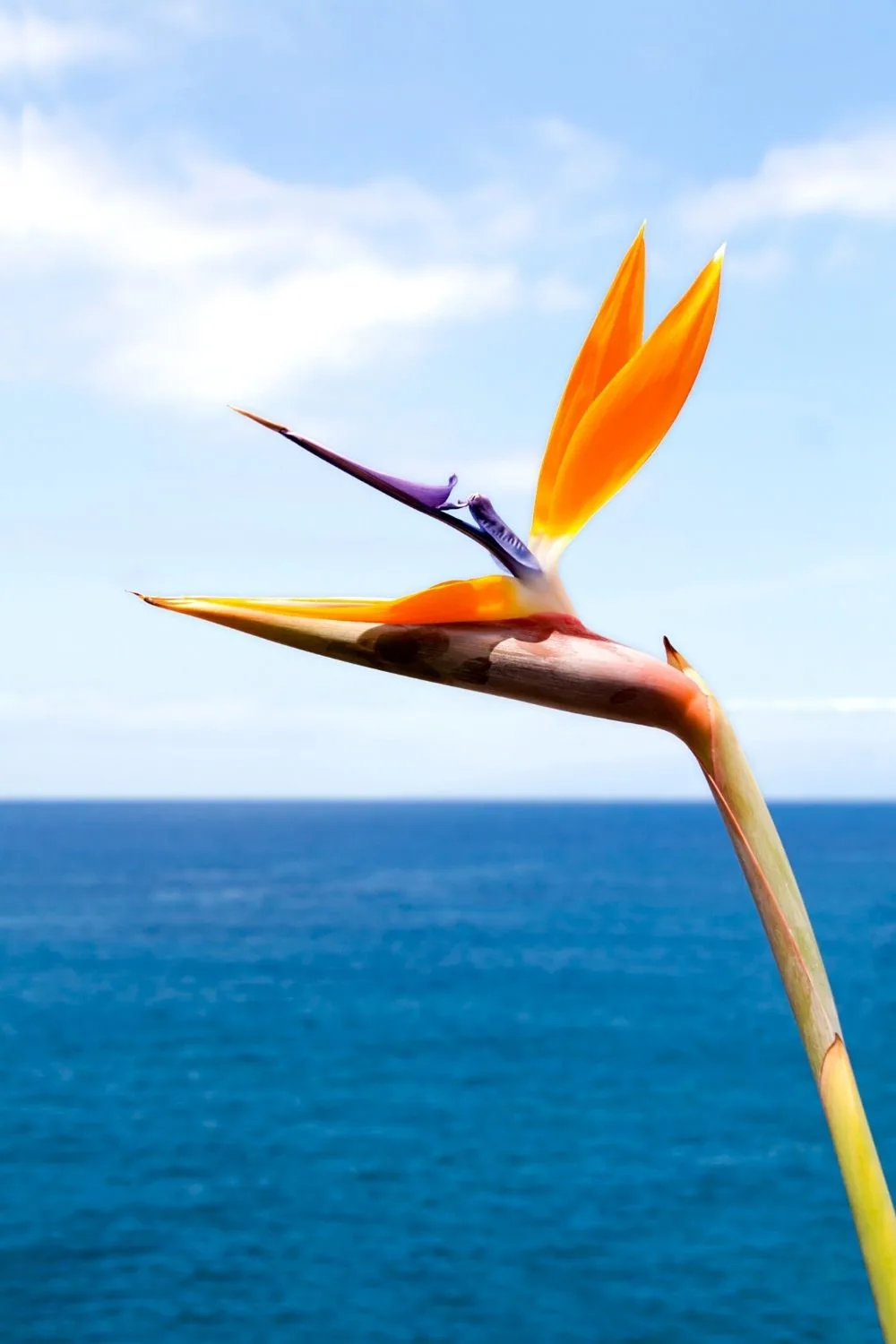
For the Bird of Paradise (Strelitzia) to grow flowers, it’s best to place it in areas receiving high or bright light
- Soil type: Potting soil that drains well
- Light: For it to produce the flowers, it needs direct sun exposure.
- Soil pH: 5.5 to 7.5
In sunny settings, this one-of-a-kind shrub produces some gorgeous flowers. Bird of paradise flowers has vibrant, feathery-shaped flowers that emerge from green bouquets, resembling the face of tropical birds.
For this one, select the brightest window in your house. In full, direct sunlight, the bird of paradise thrives.
This plant is also a great choice for propagation, so you’ll be able to produce spurs as new plants when your plant has achieved maturity.
Although your bird of paradise may thrive in low light, it is less likely to blossom its trademark flowers without a lot of sun.
So if you’re seeking a spectacular planter for that south-facing windowsill, this tropical variety is the choice to for.
6. Aloe Vera (Aloe barbadensis)
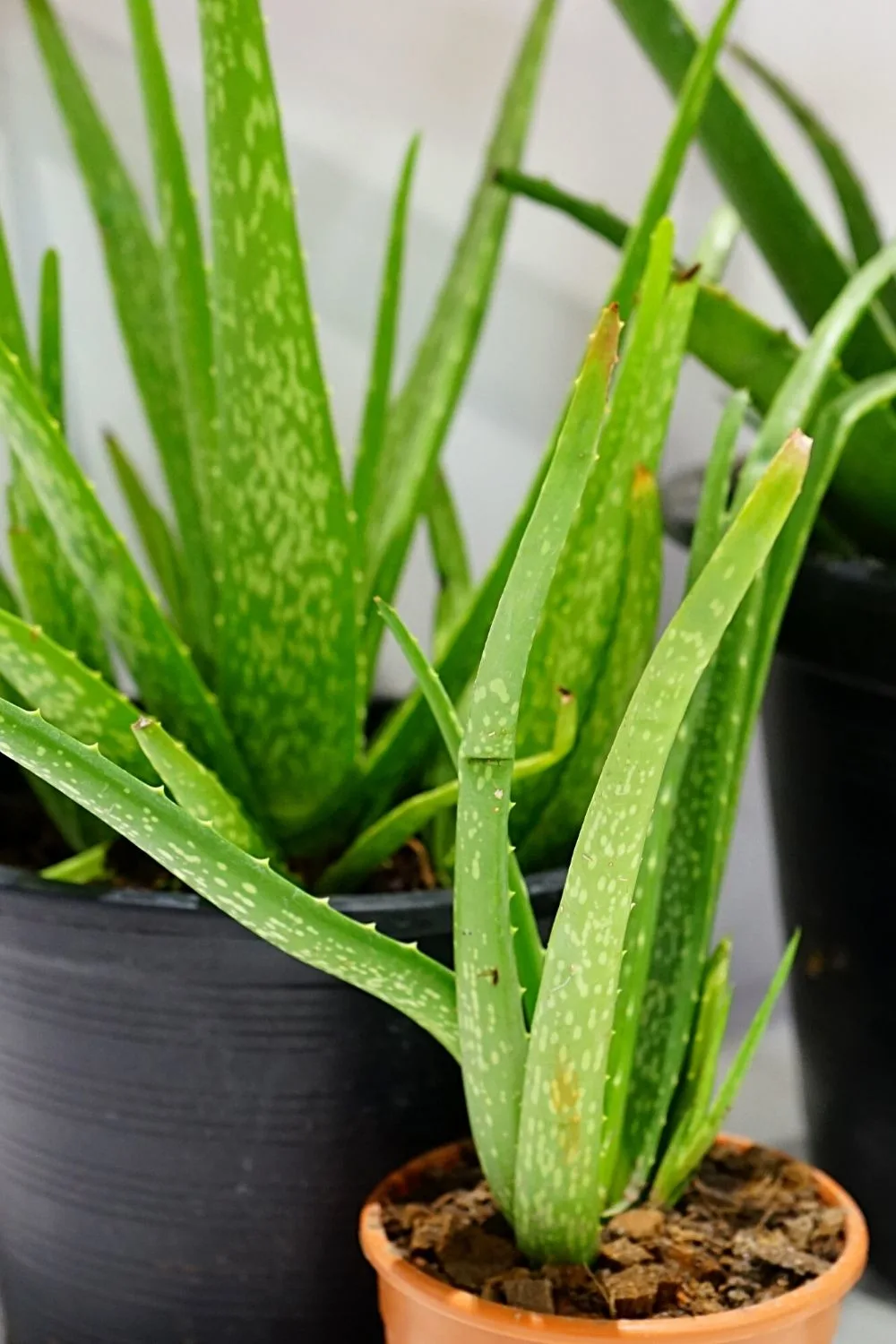
Aloe Vera (Aloe barbadensis) loves the full sun, but can thrive when placed in an area with filtered sunlight
- Water: Maintain a uniform moisture level; do not overwater; ensure adequate drainage; drought tolerant
- Light: Likes growing in full sun but can tolerate filtered sunlight as well
- Soil pH: 7.0 to 8.5
A low-maintenance aloe vera plant is a great addition to any first-aid kit.
The sap can be used to treat small cuts and blisters, and the plants can be propagated by repotting the pups.
Place your aloe vera in a hefty glazed ceramic container that will sustain the plant’s top-heavy development while also allowing it to breathe.
You can also create a pile of soil all around stems to stabilize drooping plants.
7. Echeveria
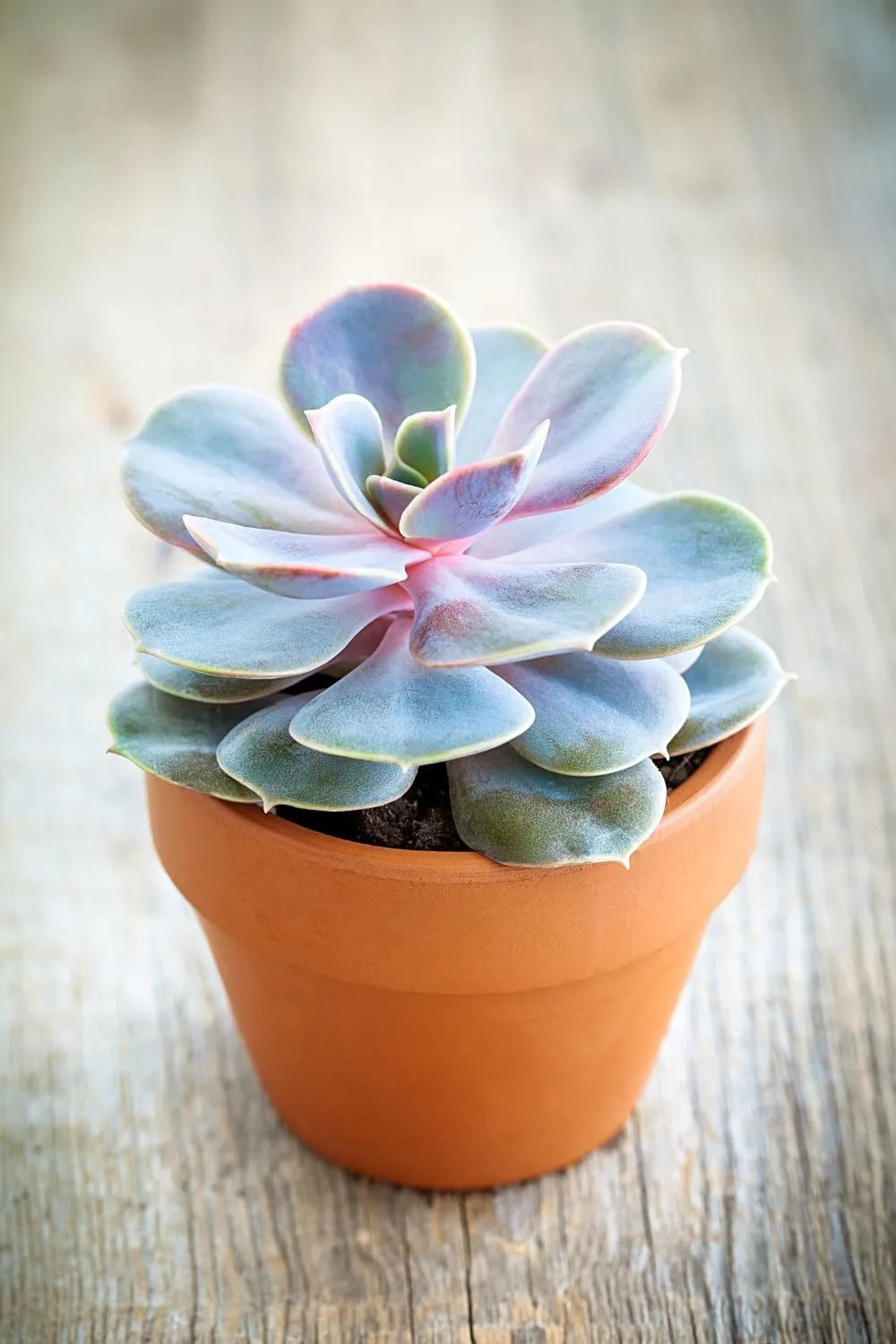
Echeveria prefers to grow in direct sunlight, but can thrive in bright yet indirect light as well
- Soil type: Well-draining cacti or succulent soil is ideal
- Light: Direct sunlight is preferred but will thrive in bright indirect light too
- Soil pH: 6.0 to 6.5
This stylish, flower-shaped succulent requires a lot of strong sunlight to develop well, with its crown level against the earth and foliage tinted with interesting color.
Echeveria will still develop with reduced light, but the flowers will become lanky and etiolated as they strive to climb for the sunlight.
If you observe symptoms of burning on the foliage of your Echeveria, move it a little further away from the light.
This genus comes in a range of colors, including green, blue, grey, and purple, and also multicolored varieties.
8. Areca Palm (Dypsis lutescens)
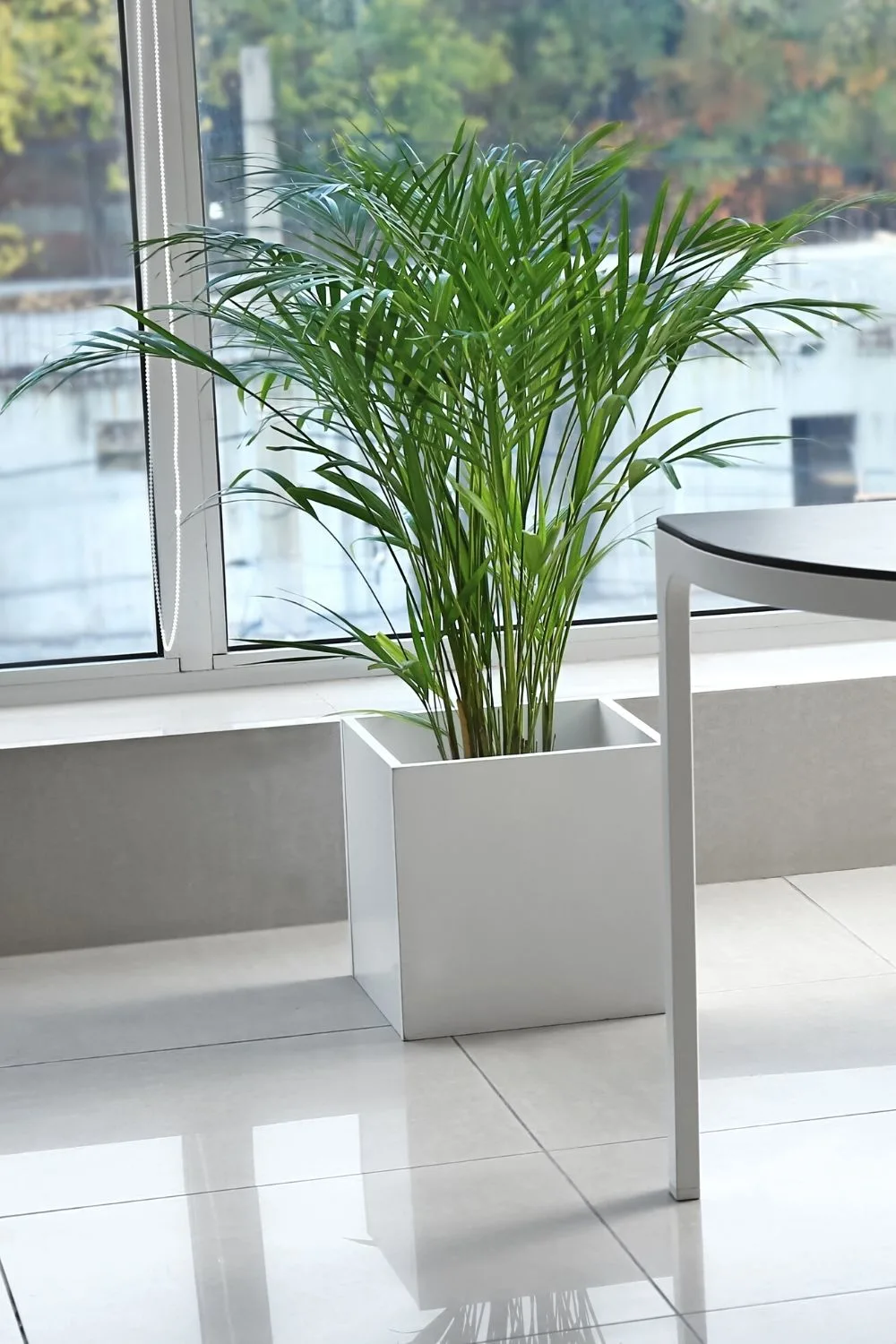
Areca Palm (Dypsis lutescens) thrives in areas receiving bright, filtered light
- Water: Excessive humidity and persistent moisture
- Light: Filtered bright light is what the plant enjoys
- Soil pH: 6.1 to 6.5
The areca palm is a magnificent exhibit for entrances or living spaces with high ceilings.
Indoors, the plants can reach a height of 6 to 8 feet and a spreading of several feet.
Areca palms require little more than a brilliantly illuminated environment and consistent moisture.
Make absolutely sure there is no water remaining in the tray beneath the pot.
9. Fiddle-Leaf Fig (Ficus lyrate)

Fiddle Leaf Fig (Ficus lyrate), a tall plant, thrives in bright direct sunlight
- Soil type: A well-draining potting mix for healthy growth
- Light: Bright direct sunlight
- Soil pH: 6.0 to 7.0
Like many interior decorator favorites, Fiddle leaf figs are a lovely way to add color to any bright space.
This tall-growing tree typically grows to a height of six feet inside but can exceed 30-50 feet in its native atmosphere.
This species necessitates a little more attention than other typical houseplants, but with the appropriate settings, a few basic care methods should suffice to witness your fig flourish in the sunny corners of your house.
For this plant to prosper, it needs to be exposed to the sun and have constantly wet soil.
10. String of Pearls (Senecio rowleyanus)
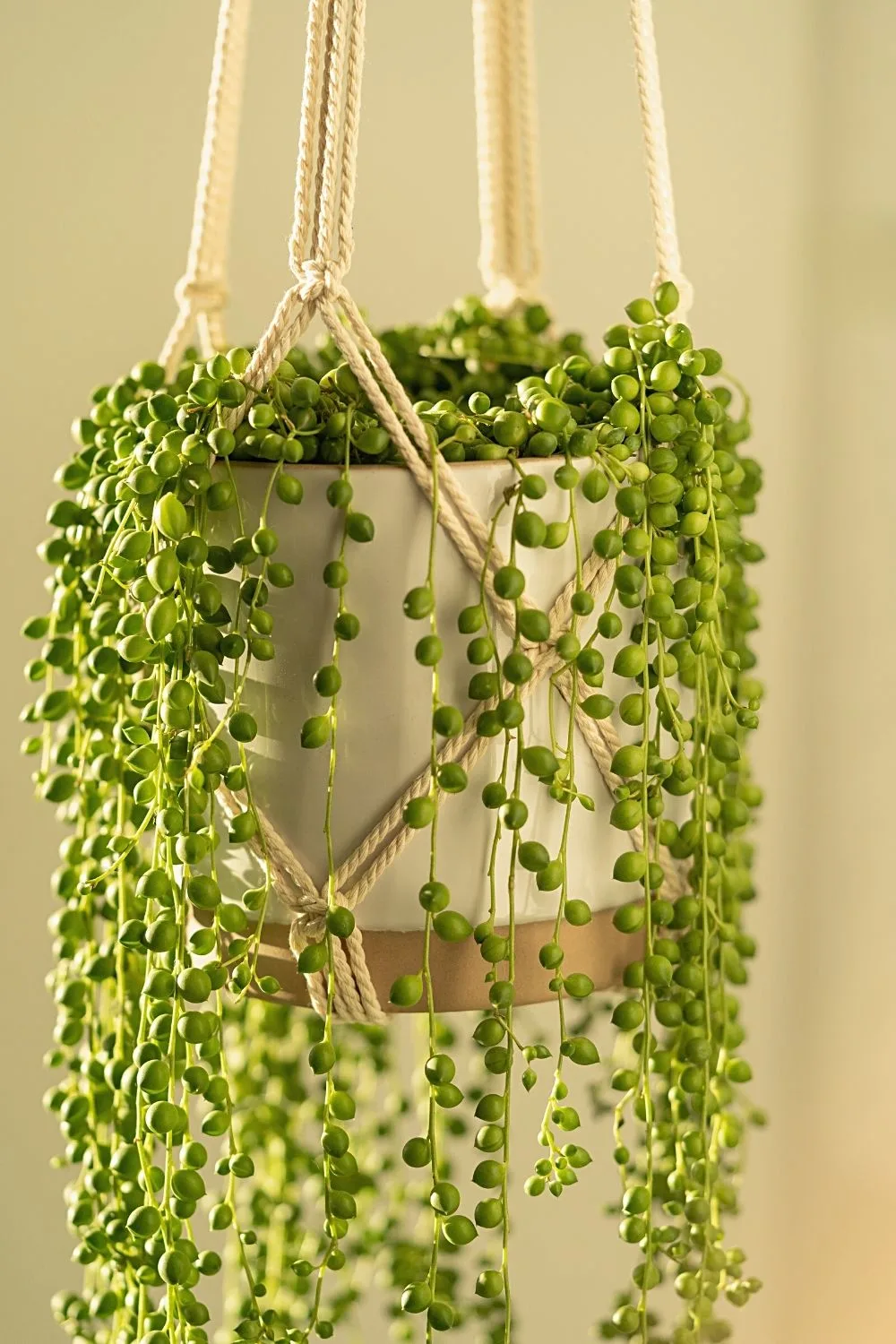
Unlike other plants that love bright and direct light, String of Pearls (Senecio rowleyanus) prefer bright yet indirect sunlight to thrive
- Water: Occasional watering is perfect for this plant
- Light: Indirect bright light is liked by the plant
- Soil pH: 6.6 to 7.5
Senecio rowleyanus plants toppling over the side of a pot or swinging baskets make for a great conversation element.
Bright indirect sunshine, fine sand, and occasional watering are all favorites of succulents.
Because roots are easy to propagate, you can give your friends a piece of this quirky plant.
Sago Palm (Cycas revoluta)
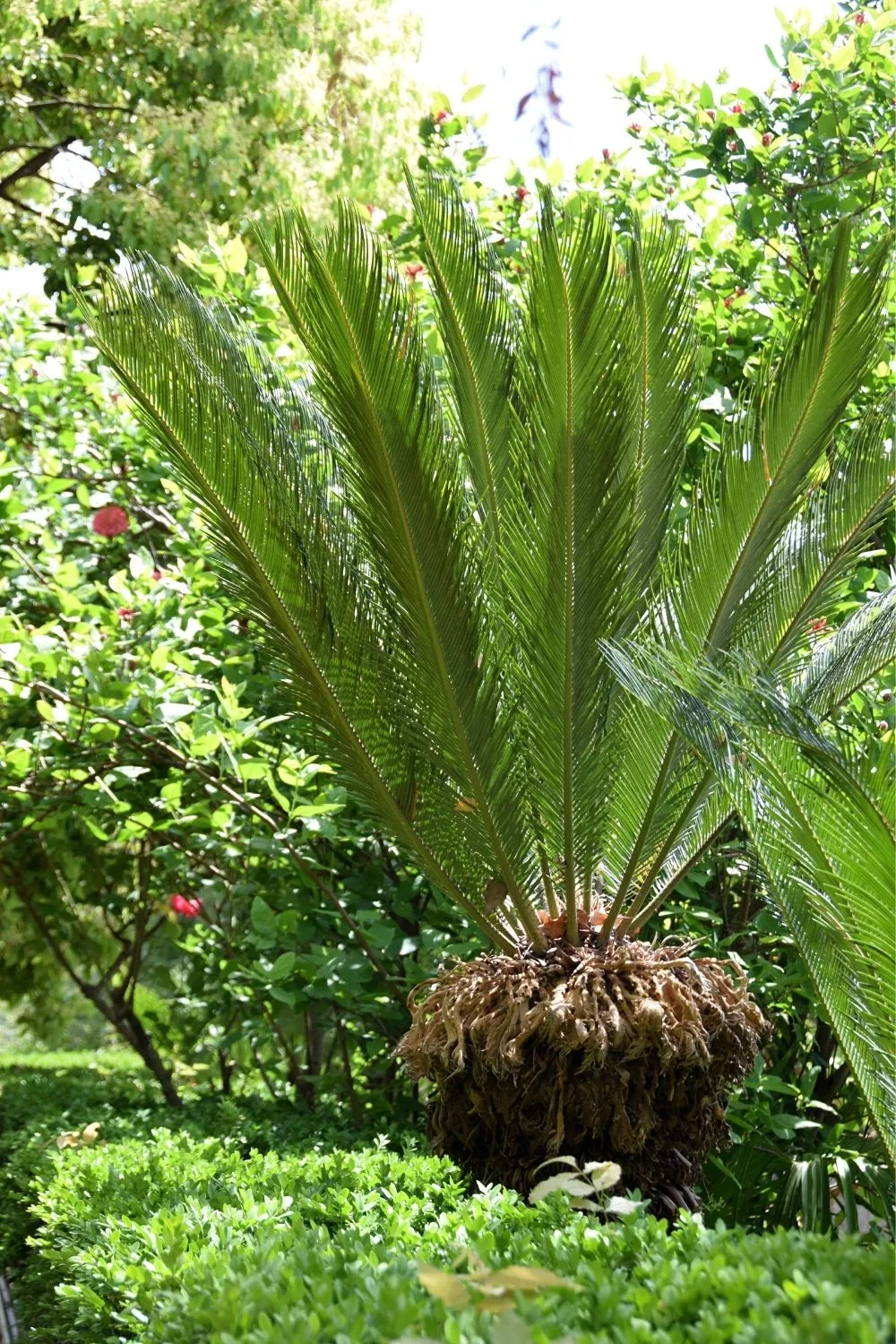
Sago Palm (Cycas revoluta) appreciates being placed in an area receiving bright, filtered sunlight
- Water: During waterings, let the plant dry out
- Light: Bright filtered light is appreciated by the plant
- Soil pH: 6.5 to 7.0
The sago palm is a cycad with a modest growth rate that works well in modern décor.
It doesn’t blossom and only sheds its leaves once in a while, so it’s a handy option for a sunny living room or bedroom.
Do you have curious cats or a little teething one?
This plant is extremely dangerous and must not be kept around cats, dogs, or children.
Geranium (Pelargonium)
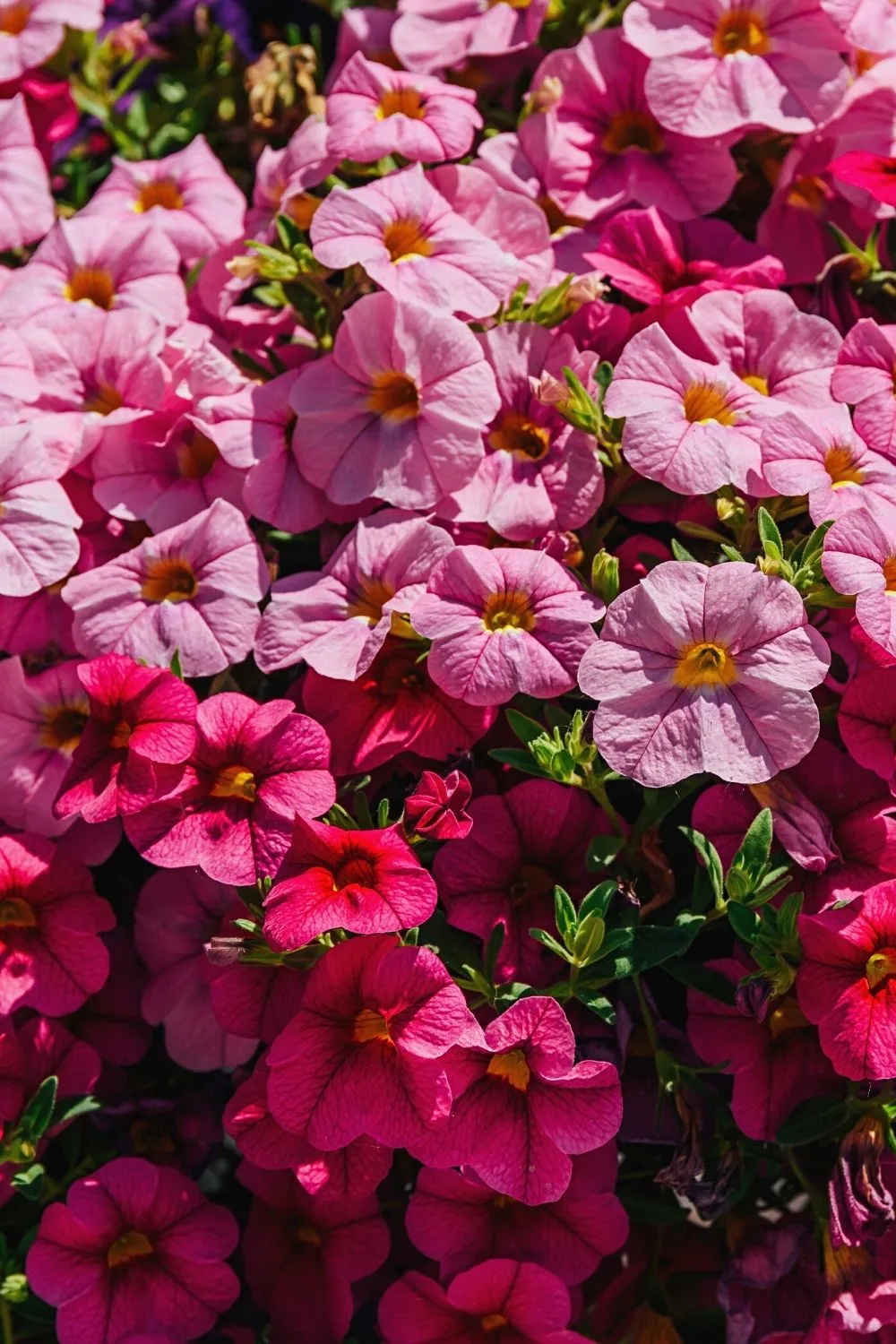
For Geranium (Pelargonium) to bloom beautifully, place it in areas receiving direct sunlight
- Soil type: A standard potting mix will work just fine
- Light: Prefers direct sunlight for optimum growth
- Soil pH: 6.0 to 6.5
If given adequate light, geraniums that flourish (and flower) in an outside garden can also grow (and flower) indoors.
Geraniums come in a range of shades, including bright red, pink, orange, white, and purple.
Put your plant out again to absorb the extra light throughout the summer season, then bring it back inside as the temperatures drop under 50 degrees Fahrenheit.
Yucca Plant (Yucca gigantea)
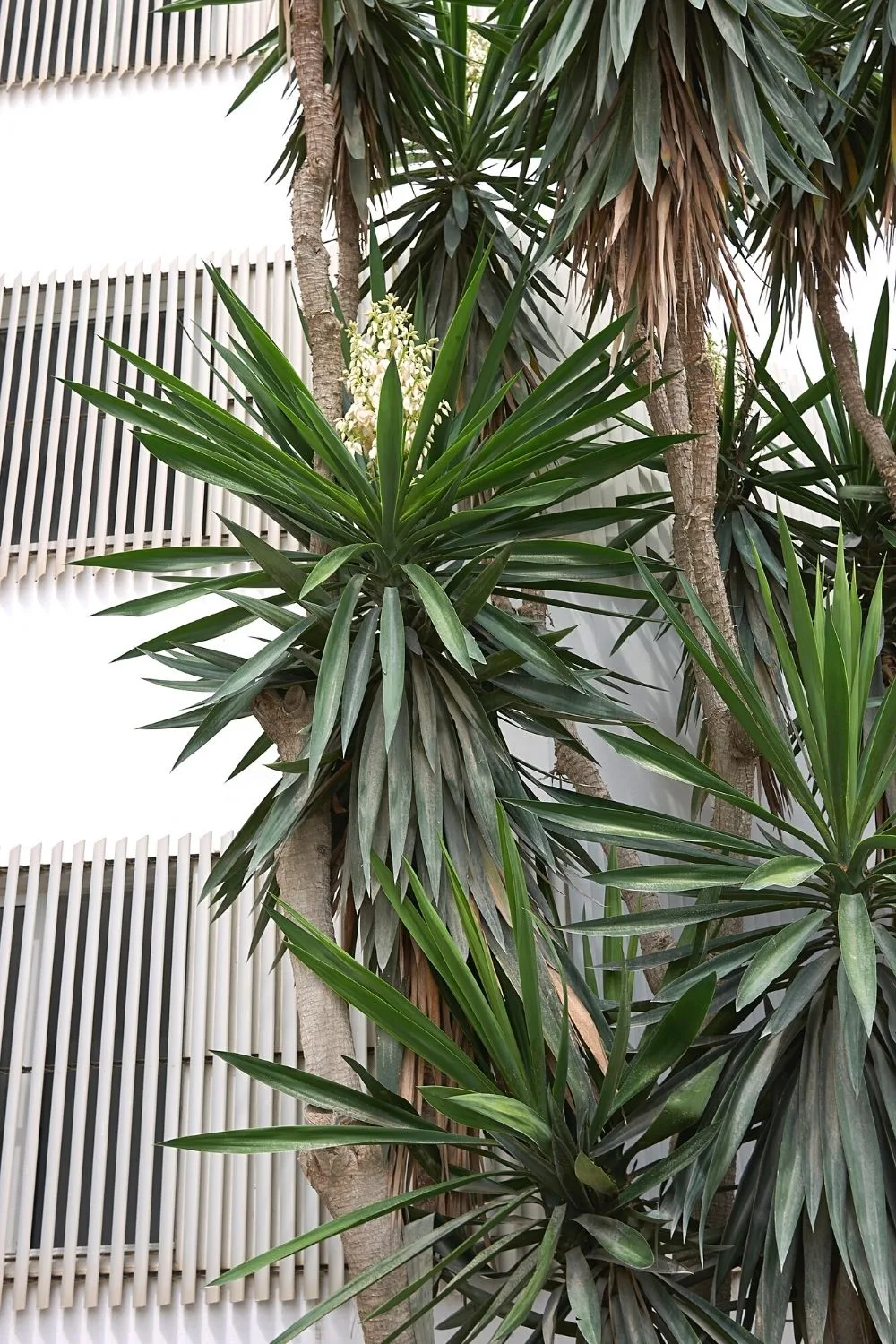
Yucca Plant (Yucca gigantea), like geraniums, thrive in brightly-lit areas
- Soil type: Well-draining potting soil will help it to thrive
- Light: This plant too prefers direct sunlight to grow
- Soil pH: 5.5 to 7.5
The yucca plant is yet another low-maintenance option.
When cultivated outside, this tree can attain a height of up to ten feet; however, inside, yucca normally achieves maturity at approximately three feet.
This arid plant can survive a wide range of climates, but it thrives in bright sunlight.
To witness your yucca flourish, place it on the west or south-facing windowsill and water it every two weeks throughout the planting period.
Papyrus (Cyperus papyrus)
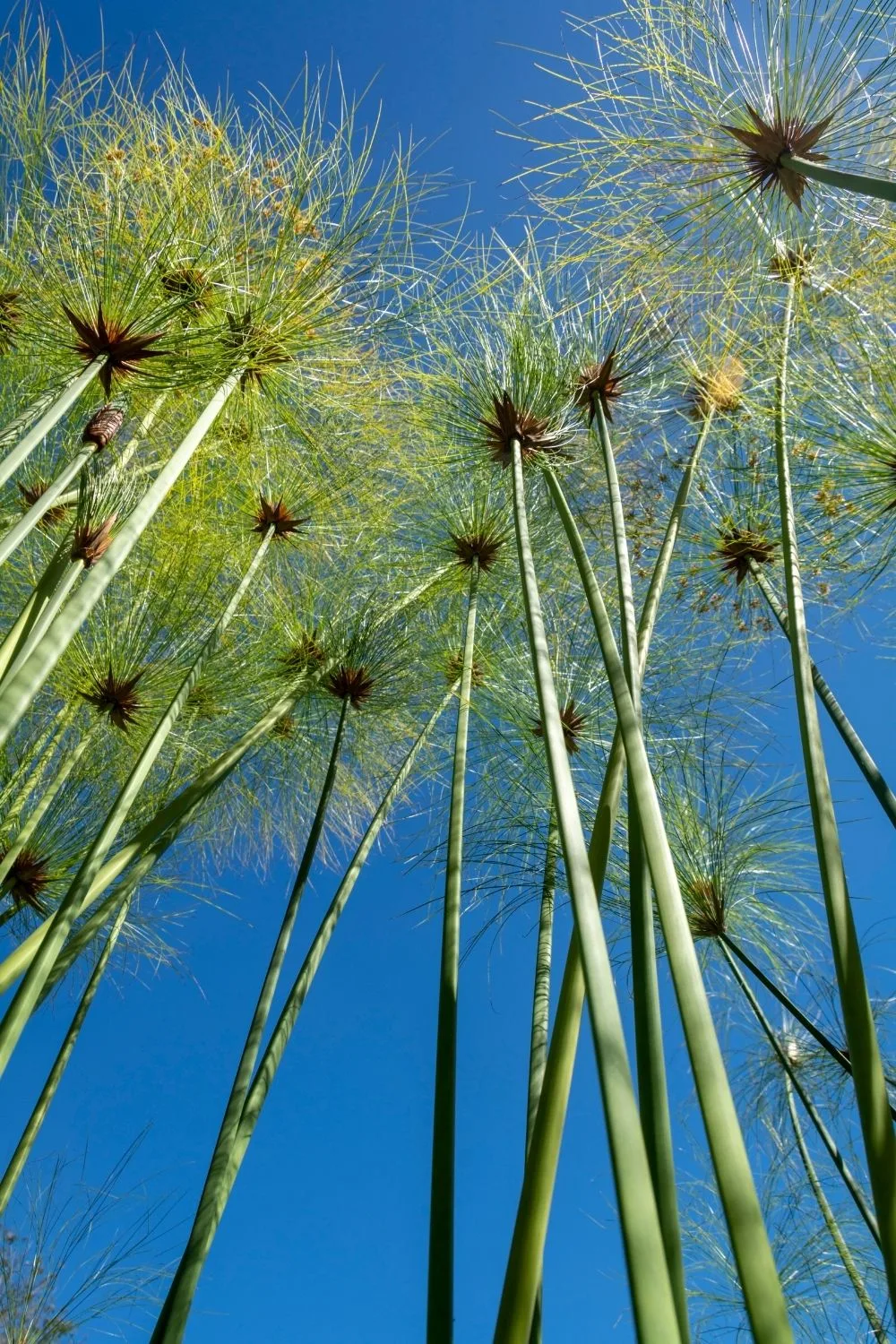
Aside from making sure it stays hydrated at all times, Papyrus (Cyperus papyrus) thrives in full sun
- Water: Consistently hydrate the roots; wet roots are preferable
- Light: Enjoys a full sun
- Soil pH: 6.0 to 8.5
The very same plant that the Egyptians utilized to construct canoes and papers is also an attractive houseplant species for full sun.
The secret to raising a healthy papyrus plant is keeping it hydrated all the time.
Papyrus is a pond edge plant; therefore, its feet are used to being wet.
To keep your containers from growing stale, place them in a bowl of water and replace them once a week.
Ponytail Palm (Beaucarnea recurvata)
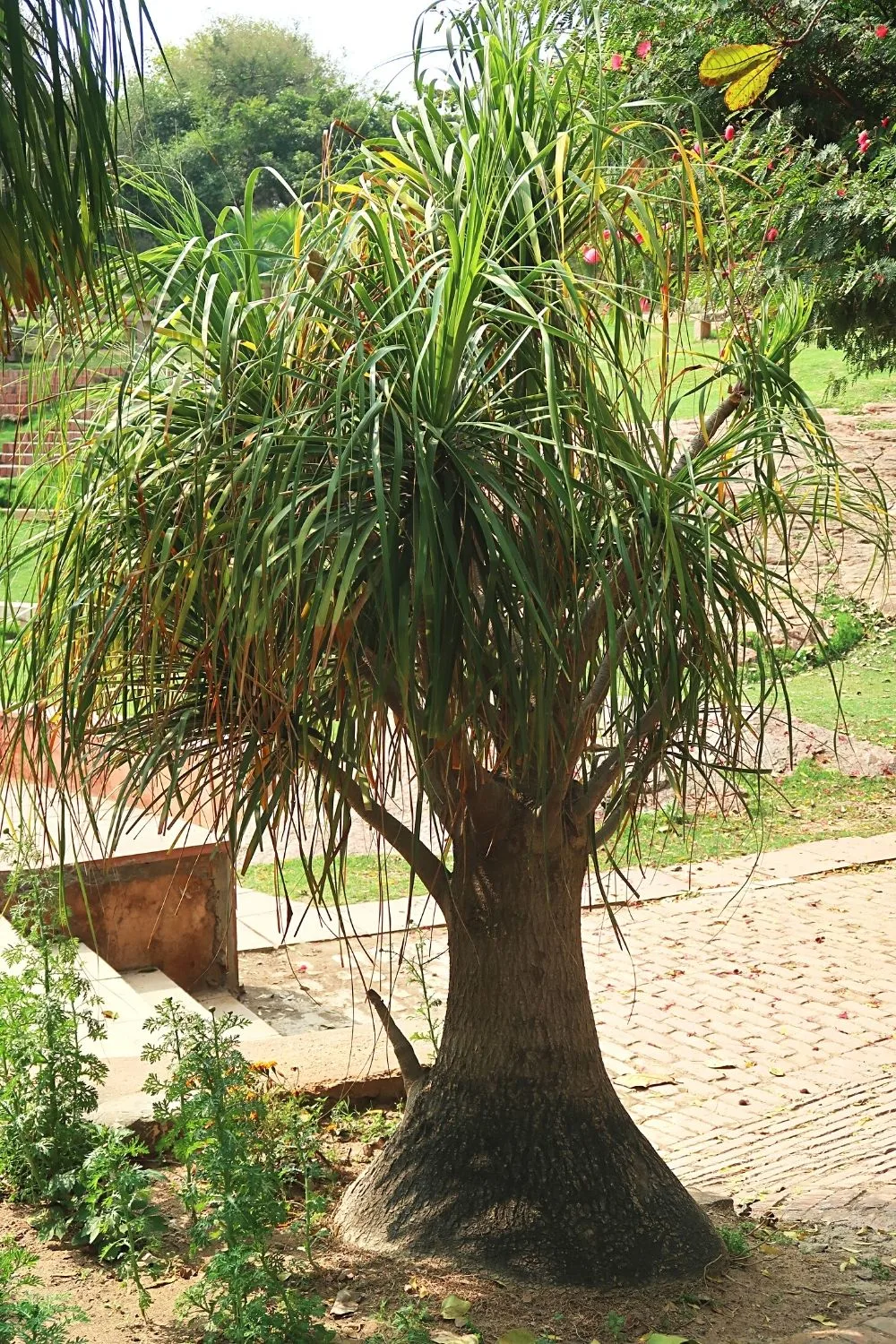
Ponytail Palm (Beaucarnea recurvata) can grow in either partial or full sunlight
- Water: Let the soil dry during waterings; the bulb-like bottom holds the moisture
- Light: Partial or full sunlight is what is preferred by the plant
- Soil pH: 6.5 to 7.5
The ponytail palm’s bulging trunks and curly leaves make it a fascinating decorative plant for a bright kitchen or leisure area.
Treat your ponytail palm as though it’s succulent. Feed it rough soil with water and sand once every week.
The ponytail palm is a slow-growing palm that only requires repotting after a year or two.
Jasmine
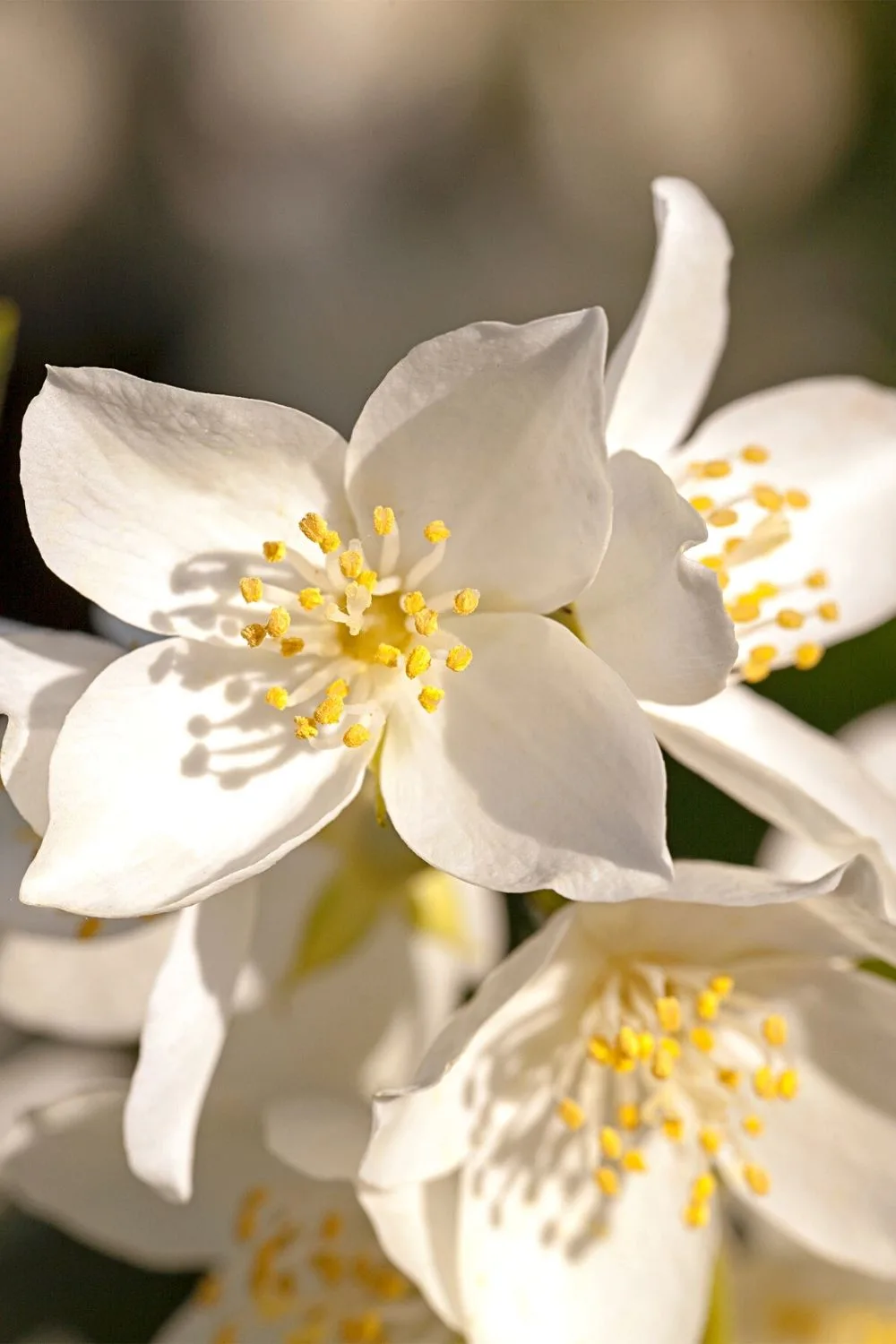
Jasmine prefers to grow in an area receiving bright but indirect light
- Water: Water on a daily basis; retain moisture; mist on a regular basis
- Light: Indirect bright light
- Soil pH: 4.9 and 7.5
Florists prize jasmine vines for their aromatic flowers that bloom in the winter season.
White jasmine blossoms are simple but abundant, and a few clipped stems add a distinctive touch to any floral arrangements.
Pink blooms are also seen in certain types. Strong but not direct, sunshine is preferred by jasmine plants.
They require a humid climate to thrive, and a summer break spent outside will help them live longer and perform better.
Money Tree (Pachira Aquatica)
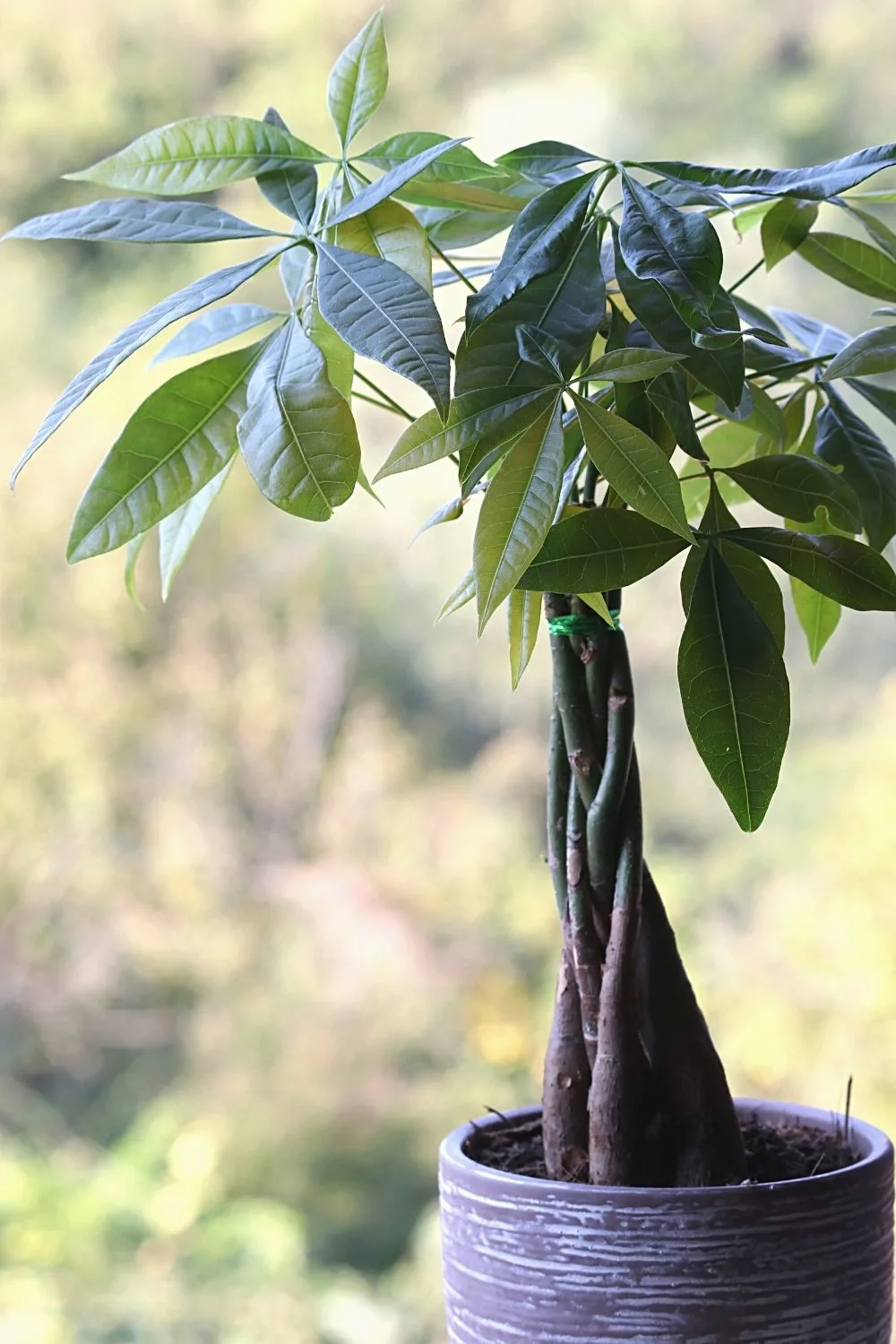
To help the Money Tree (Pachira Aquatica) thrive, place it in an area receiving bright but indirect light
- Soil type: Will flourish in a well-draining succulent or cacti soil
- Light: Indirect bright light will help the plant thrive
- Soil pH: 6.0 to 7.5
With numerous braided-together stems terminating in a cloud of luscious, palm-shaped green foliage, this easy-growing, low-maintenance houseplant is commonly marketed as a bonsai tree.
Money trees are also popular in feng shui, where they are thought to bring economic luck, thus the title.
With the bright sunshine of midsummer, this plant is vulnerable to sunburn, so keep a watch on its foliage throughout the planting season.
Snake Plant (Sansevieria trifasciata)
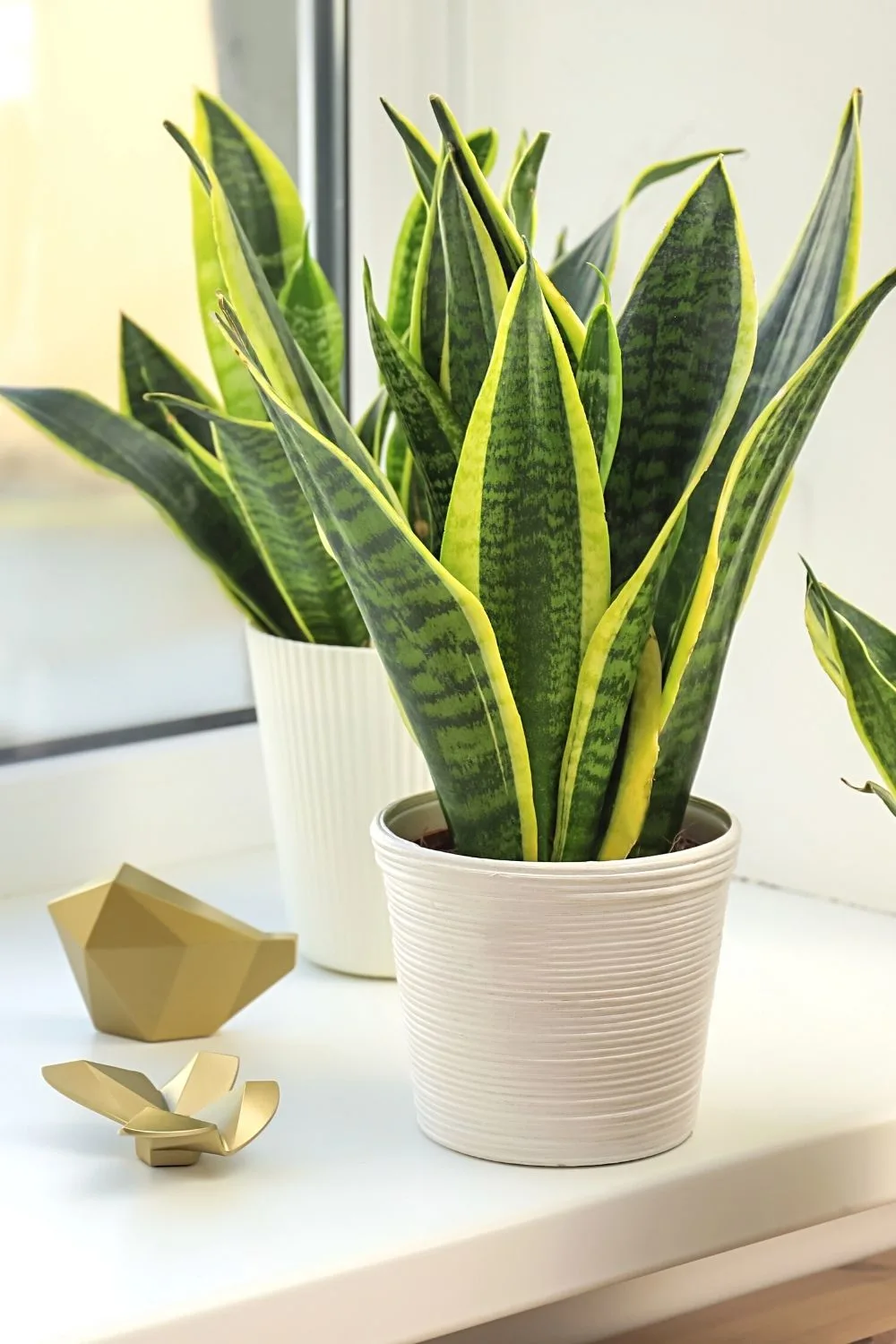
A Snake Plant (Sansevieria trifasciata) can thrive in both high and low light settings
- Water: Allow ample time for the soil to dry first to avoid overwatering it
- Light: Prefers both high and low light settings
- Soil pH: 4.5 to 8.5
Most garden centers carry this trendy ‘impossible-to-kill’ houseplant as an excellent specimen for individuals new to plants or too occupied to pay much attention to their houseplants.
Sansevieria trifasciata thrives in strong light, but it can also thrive in the shade.
If you’re lucky, your snake plant may surprise you with a burst of aromatic white blossoms.
Hibiscus (Hibiscus rosa-Sinensis)
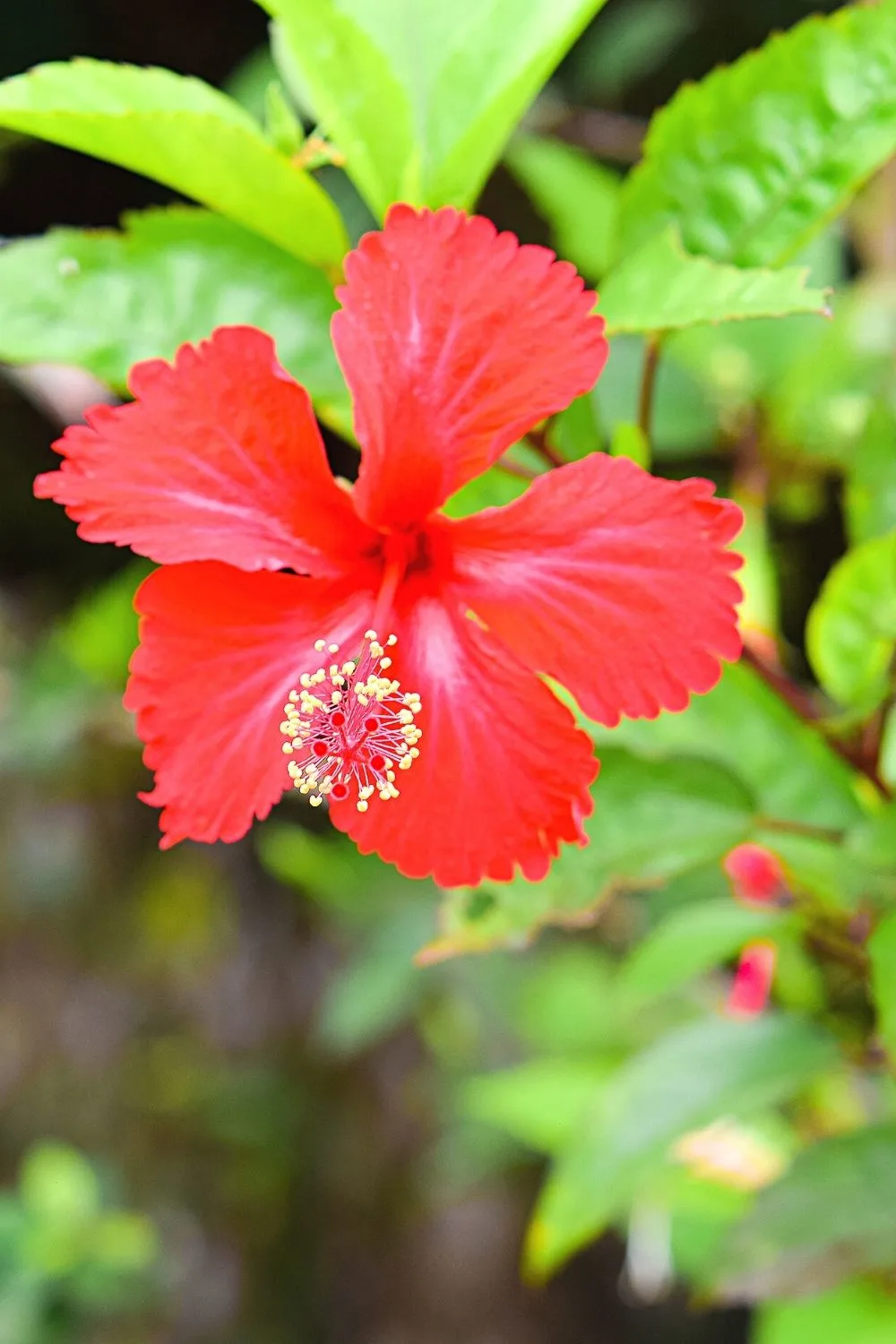
Just like the Bird of Paradise, Hibiscus (Hibiscus rosa-Sinensis) needs bright light for it to bloom
- Water: Water on a regular basis, but make sure there’s enough drainage
- Light: Prefers full sun
- Soil pH: 6.5 and 6.8
The tropical hibiscus has the largest blossoms of any houseplant.
When cultivating hibiscus inside, a location with plenty of light is vital for producing blooms.
Squeeze your flowers once a month to keep them tight and spread, and give them a potassium-rich houseplant fertilizer regularly.
Provide consistent, equal moisture and prevent damp soil from maintaining your hibiscus healthy.
Dragon Tree (Dracaena Draco)
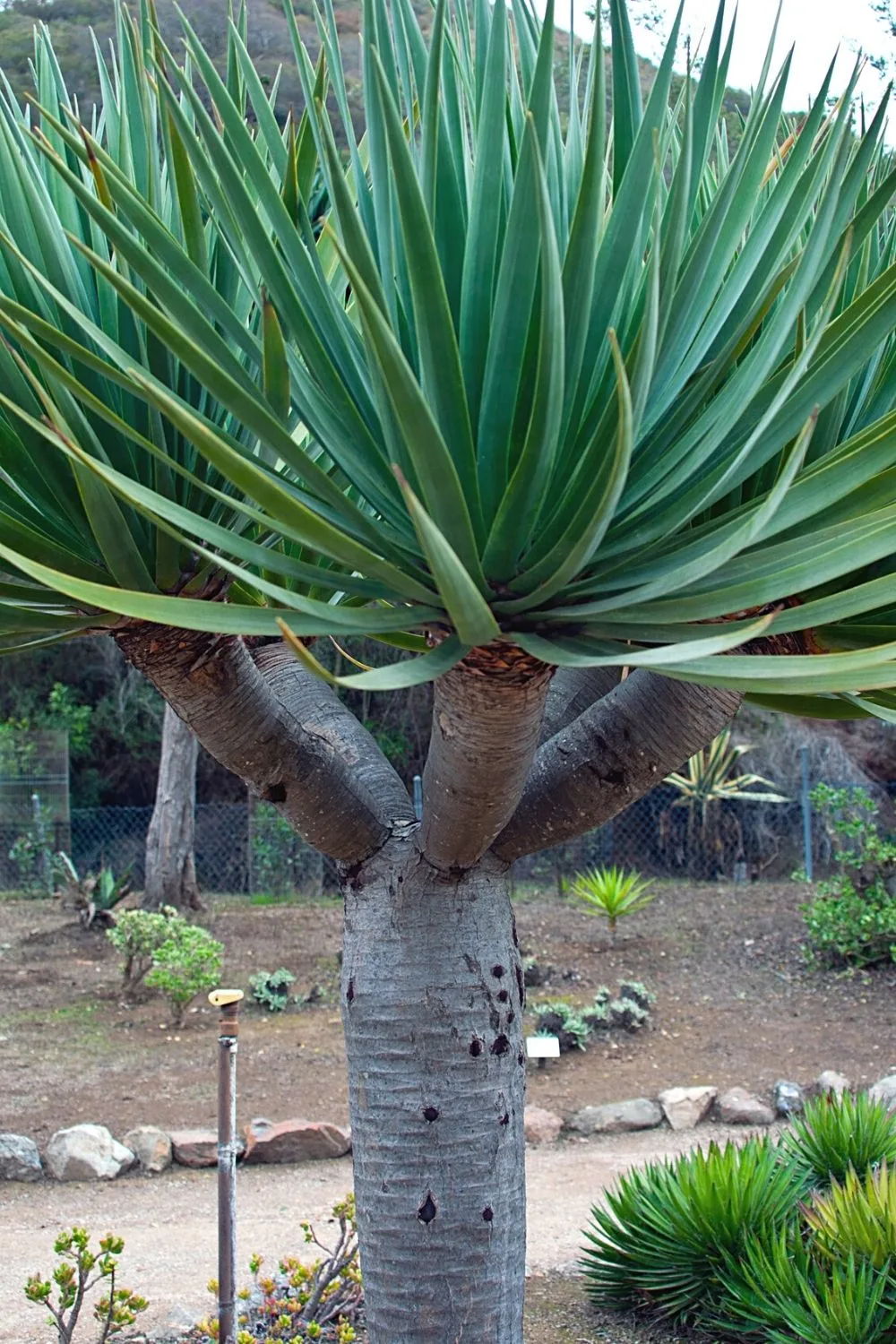
Dragon Tree (Dracaena Draco) loves to grow in areas receiving full sunlight
- Soil type: Sandy clay and regular potting soil with a well-draining mix
- Light: The tree prefers to be cultivated in an area receiving full sun
- Soil pH: 6.0 to 6.5
The dragon tree is an excellent contender for your house if you’re searching for a striking plant that can flourish near your south-facing window.
Indoors, this species normally grows to a height of six to eight feet and will develop quicker if given more sunlight.
Dragon trees are fairly simple to maintain, requiring simply water whenever the soil feels dry and fertilizer once six months.
Because this plant is easy to propagate, it can produce numerous copies of new plants when it reaches maturity.
Conclusion About
At first look, sunny spaces and south-facing windows appear to be beneficial to plants, but far too much light can cause leaf burn in several houseplants.
Make sure you understand how much sunshine is required for a specific houseplant.
These plants will grow in your room if you have bright, light-filled windows that receive direct sunlight.
The ledge of south-facing windows will provide far more light throughout the day for your indoor garden.
But window frames on the west part of your house, which receive intense afternoon light, are also a good choice.

Daniel has been a plant enthusiast for over 20 years. He owns hundreds of houseplants and prepares for the chili growing seasons yearly with great anticipation. His favorite plants are plant species in the Araceae family, such as Monstera, Philodendron, and Anthurium. He also loves gardening and is growing hot peppers, tomatoes, and many more vegetables.

